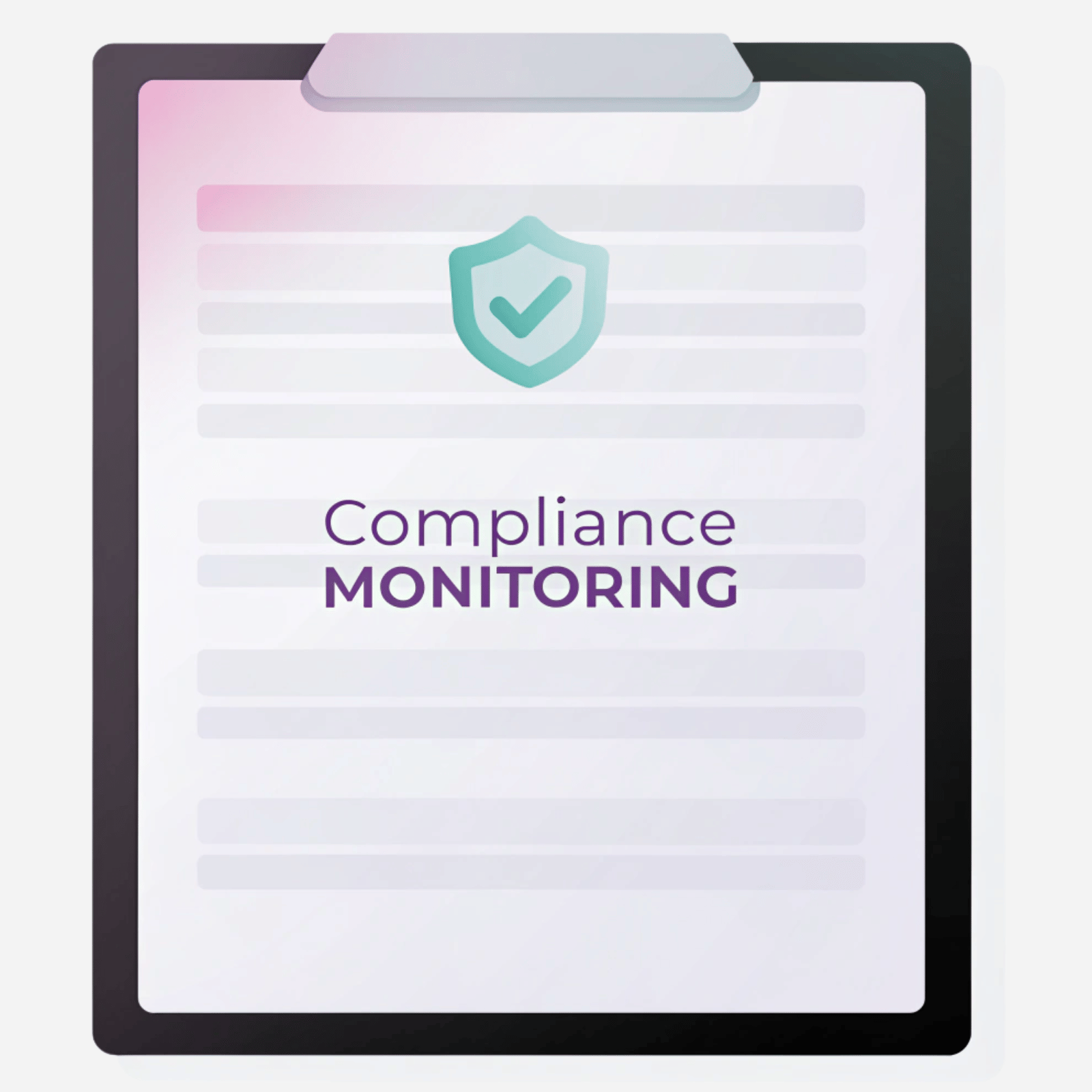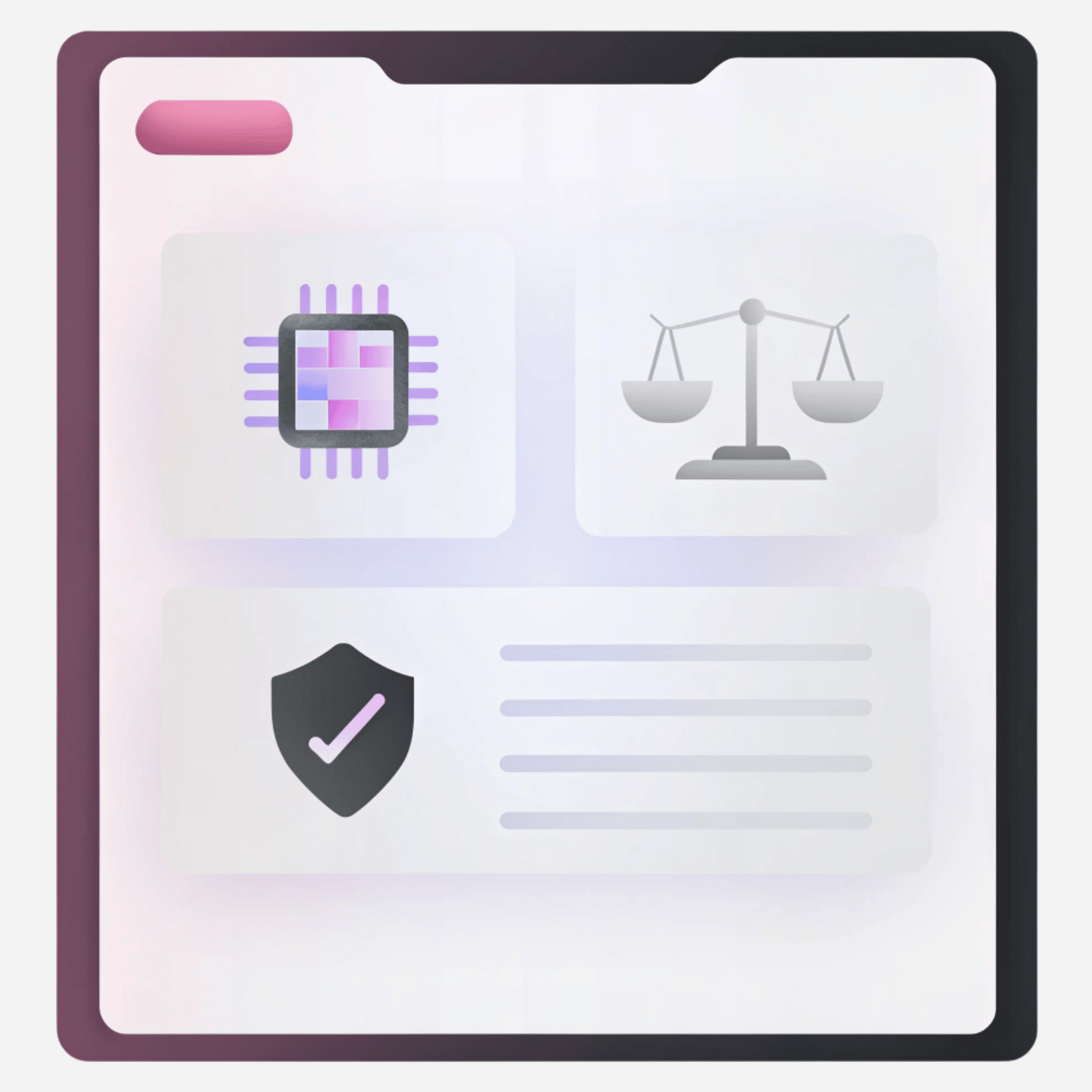
Introduction
In fiscal year 2025, the U.S. food industry recorded 1,590 product recalls, underscoring the ongoing challenges of maintaining food safety in a complex and globalized supply chain. The reasons for these recalls are wide-ranging, reflecting the multiple risks companies face when producing, processing, and distributing food.
Some recalls were initiated after products tested positive for harmful pathogens such as Listeria monocytogenes or Salmonella, while others involved potential contamination with Staphylococcus aureus, Norovirus, or even chemical hazards like Cesium-137 (Cs-137).
Allergen-related recalls were also prevalent, with products containing undeclared peanuts, almonds, soy, wheat, milk, sesame, or pecans being pulled from the market. Labeling issues contributed to recalls as well, including incorrect expiration dates, misidentified ingredients, or missing allergen statements. In several cases, products were distributed despite being on FDA hold for elevated levels of substances such as Nitrofuran, or for unapproved drug claims in dietary supplements.
Other recalls arose from physical contaminants, mold, yeast, spoilage, or insufficient pasteurization and sanitation records. Even seemingly minor issues, like the removal of soy from a label or misidentification of fish species, led to recalls, highlighting the critical attention to detail required in food safety operations.
These examples illustrate the sheer complexity and scale of food safety challenges today. As ingredients and finished products move across multiple locations and supply chains, businesses must respond quickly to potential risks.
Food recall management software enables companies to centralize information, track affected products, coordinate with authorities, and manage food recalls efficiently. By automating critical processes and maintaining compliance with regulatory standards, such software helps reduce risks to consumers and protect brand integrity.
This guide explores the role of food safety software in recall management in 2026, providing an in-depth view of the tools, strategies, and systems companies can leverage to stay prepared. From microbial contamination to allergen errors, labeling mistakes, and chemical hazards, understanding these risks and the technology to manage them is essential for modern food businesses.
What is Food Recall Management?
Food recall management refers to the structured process used to remove unsafe food products from the market at any stage of the food chain, including those already in the possession of consumers. It is a core element of food safety governance, designed to minimize health risks and maintain consumer protection when contamination, mislabeling, or other safety issues are detected.
At its foundation, food recall management relies on an organized framework that defines responsibilities, procedures, and communication channels across the food industry and regulatory authorities.
A recall can be initiated by a food business operator, a competent authority, or both, depending on the national system. The overall goal is to ensure that affected products are identified, traced, and removed from distribution as quickly and efficiently as possible.
A national food recall system typically includes:
- A legal and regulatory framework that establishes the authority and obligations for food recalls.
- Pre-established protocols that guide how recalls are triggered, executed, and verified.
- Collaboration mechanisms between government agencies and food business operators to coordinate actions and share information.
- Training and communication systems that ensure readiness and transparency during recall events.
- Evaluation and record-keeping tools to analyze recall effectiveness and prevent recurrence.
For food businesses, having an internal food recall plan is essential. Such a plan outlines procedures for identifying affected products, contacting suppliers and customers, and documenting corrective actions. It also supports traceability, defined by the Codex Alimentarius Commission as the ability to follow the movement of a food through specific stages of production, processing, and distribution.
Examples from National Systems
In the United States, food recalls are coordinated primarily by the Food and Drug Administration (FDA) and the U.S. Department of Agriculture (USDA). The FDA oversees recalls for most food products, while the USDA manages recalls related to meat, poultry, and certain egg products. Both agencies maintain public recall databases and issue regular updates to ensure transparency.
In Canada, the Canadian Food Inspection Agency (CFIA) manages food recall procedures in collaboration with Health Canada and Public Health Agency of Canada. The CFIA’s recall system emphasizes preventive control plans, traceability, and public notification. Canadian regulations require food businesses to have recall procedures in place and to maintain detailed product traceability records that can be accessed quickly during an incident.
How Food Recalls Are Classified and Tracked
When a recall is initiated, one of the first steps is determining its classification and distribution pattern. These two factors define the scale, urgency, and level of public communication required.
1. Recall Classification (by Risk Level)
- Class I: A situation where there is a reasonable probability that exposure to the product will cause serious health consequences or death (e.g., Listeria or E. coli contamination).
- Class II: A product that may cause temporary or medically reversible health effects, or where the likelihood of serious consequences is remote (e.g., undeclared allergens).
- Class III: A product that is unlikely to cause adverse health effects but violates labeling or manufacturing standards (e.g., mislabeling or minor packaging defects).
2. Distribution Patterns (Scope of the Recall)
The distribution pattern describes where the recalled product was sold or shipped - from a single region to multiple countries.
FDA recall data often lists the affected areas in detail, such as:
- Regional recalls limited to a few states (e.g., CT, NJ, VA)
- Nationwide recalls covering over 20 states (e.g., AK, CA, TX, NY, WA, WY)
- International recalls involving the U.S., Canada, Australia, and Europe
These patterns show how widely products can travel before an issue is detected. The broader the distribution, the more complex the recall becomes - requiring collaboration across supply chain partners, retailers, and regulators.
Modern food recall management software enhances these capabilities by digitizing traceability records, automating notifications, and providing centralized dashboards for recall coordination. These systems help companies manage food recalls more effectively, ensuring compliance with both internal quality standards and national regulations.
By combining clear governance, operational readiness, and advanced technology, food recall management enables the food industry to respond quickly to safety events, reduce risk exposure, and maintain public trust.
How to Choose Food Recall Management Software?
With a clear understanding of what food recall management entails and how recalls are classified and tracked, the next step for any food business operator or regulatory authority is selecting the right tools to manage food recalls effectively.
Modern food recall management software acts as the backbone of a responsive, compliant, and transparent recall system. Choosing the right solution can make the difference between a swift, controlled recall and a delayed, error-prone response that risks public safety and brand reputation.
According to the FAO/WHO Guide for Developing and Improving National Food Recall Systems, a successful recall relies on seven key elements: a solid legal framework, clearly defined roles and responsibilities, effective communication, robust traceability, reliable documentation, training, and regular review of the recall system.
The best software solutions are designed to support and strengthen each of these areas, enabling faster, more transparent, and fully compliant recall management.
Key Considerations When Selecting Food Recall Management Software
1. Ensure Full Traceability Across the Food Chain
Traceability is the foundation of any effective recall. The software should support the one-step-forward, one-step-back principle outlined by FAO/WHO, allowing teams to instantly identify affected batches, trace ingredients to their source, and track distribution across multiple locations. Integration with ERP or supply chain systems enhances visibility and control throughout the entire food chain.
2. Look for Strong Communication and Notification Tools
Effective communication is essential. Choose software that automates notifications to internal teams, regulatory authorities, distributors, and consumers. Features like email or SMS alerts, dashboards, and pre-built communication templates ensure information is shared quickly and accurately during a recall event.
3. Prioritize Documentation and Audit Readiness
Detailed records are critical for regulatory compliance and post-recall analysis. The ideal system automatically logs every step of a recall - from initiation to verification and disposal - supporting audits and lessons-learned evaluations without additional manual effort.
4. Evaluate Risk Assessment and Decision-Support Capabilities
Recall decisions depend on the severity of the risk and the scope of distribution. Look for software that provides risk categorization, decision trees, and prioritization tools.
5. Check for Multiagency and International Collaboration Features
Recalls often involve multiple agencies and, in many cases, cross-border coordination through networks like INFOSAN. The software should enable secure collaboration and data sharing with external stakeholders to accelerate global response to food safety threats.
6. Assess Ease of Use and Training Options
Even the most advanced platform will fail without proper adoption. User-friendly dashboards, multilingual interfaces, and built-in training modules or simulations ensure that quality assurance teams and compliance managers can confidently operate the system.
7. Review Compliance, Integration, and Support
Ensure the software aligns with international food safety standards such as Codex Alimentarius, HACCP, and ISO 22000. It should integrate seamlessly with existing systems, provide 24/7 support, and allow updates in response to evolving regulations.
AI in Food Recall Management
Artificial intelligence is emerging as a key differentiator in modern food recall management software. AI can analyze distribution, traceability, and historical recall data to identify potential risks before they escalate. It supports:
- Predictive risk assessment: Prioritizing recalls based on potential severity and distribution impact.
- Automated data analysis: Detecting inconsistencies, gaps, or anomalies in documentation.
- Smart alerts and notifications: Highlighting the most critical actions for teams and stakeholders.
- Simulation and training: Running realistic recall scenarios for staff preparedness.
- Regulatory monitoring: Suggesting updates to processes when rules or standards change.
By integrating AI as a dedicated component, companies gain faster, more precise insights, improving both recall efficiency and consumer protection.
IONI - Food Safety Software for Food Recall Management
Building on the previous discussion of selecting the right food recall management software, IONI demonstrates how a digital platform can manage food recalls efficiently, maintain compliance, and reduce risks across the food chain. Its workflow combines real-time monitoring, AI-driven insights, CAPA management, SOP updates, task tracking, and compliance dashboards to create a centralized system for proactive food safety management.
Step 1. Introduction: How the Recall Process Works in IONI
Food Recall Management begins by detecting deviations in production, quality, or storage data.
Deviations may include:
- Temperature fluctuations
- Potential contamination or allergen risks
- Process inconsistencies or equipment issues
Once a deviation is identified, the system automatically logs the event, assigns it a risk level, and triggers the recall management workflow. The platform can track deviations across multiple production lines and facilities and link deviations directly to recalls to ensure rapid response. This ensures that every issue is addressed immediately and systematically.

Step 2. AI-Suggestions for Corrective & Preventive Actions (CAPA)
IONI uses AI to propose corrective and preventive actions, even in cases where the deviation does not have clear thresholds. Corrective actions may include quarantining affected batches, re-cooling or reprocessing products, adjusting production steps or ingredient handling, and recalibrating equipment or verifying measurement devices.
Preventive actions may include updating SOPs, scheduling preventive maintenance, adding monitoring points, or enhancing staff training.
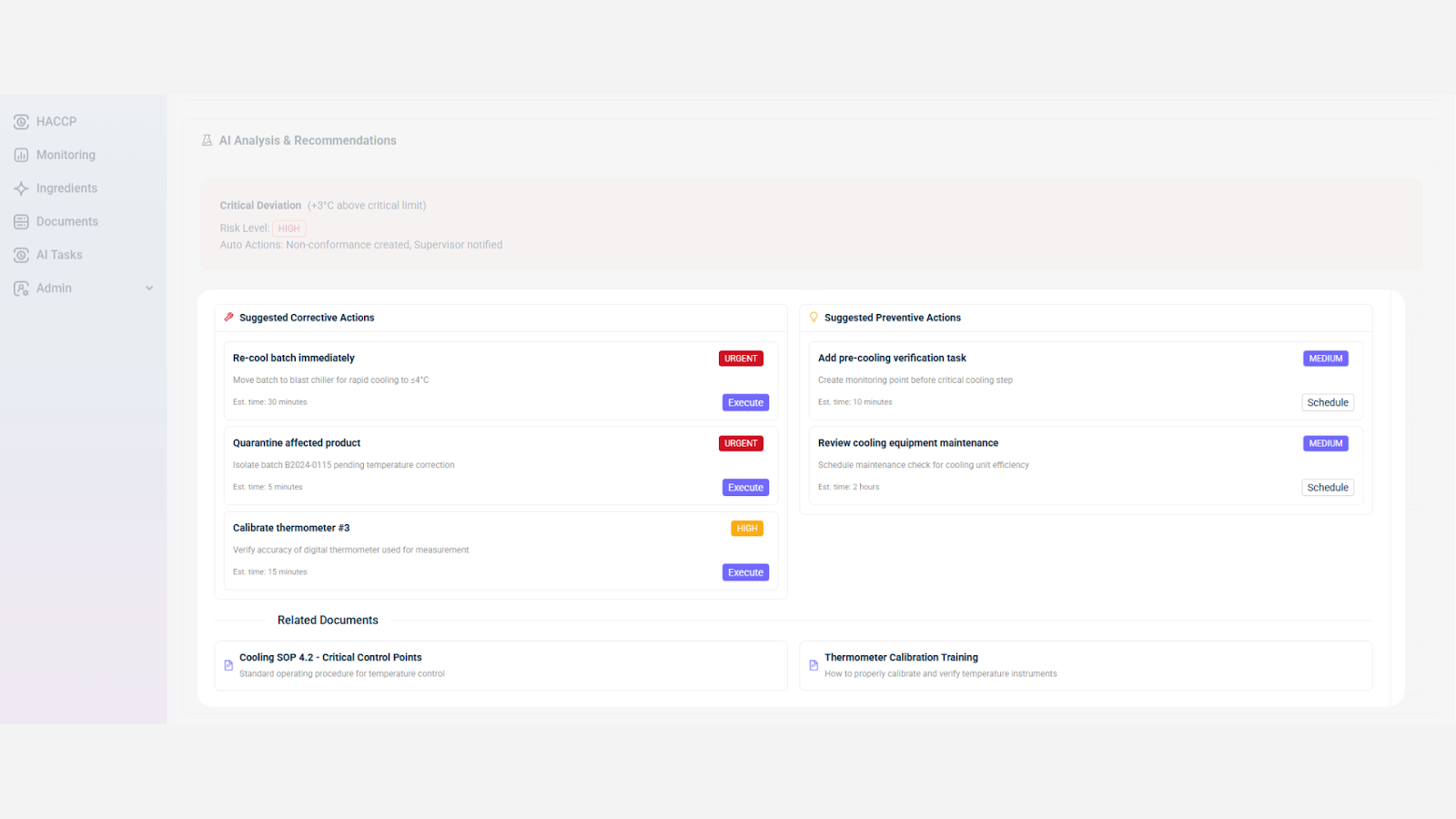
AI recommendations ensure that actions are prioritized by risk level, helping businesses prevent recalls before they occur. IONI also allows food businesses to receive AI suggestions for adding hazards or preventive measures, even in areas without clear thresholds, ensuring no risk goes unnoticed.
Non-Conformances and Recalls with AI-Driven CAPA and Risk Management
When a critical deviation occurs - such as a temperature reading above the safe limit - IONI immediately flags the issue, assigns a high-risk level, and creates a corresponding non-conformance (NC). The system automatically notifies supervisors and relevant personnel. AI then suggests corrective actions, such as quarantining affected products or recalibrating equipment, along with preventive measures to reduce future risk.
Step 3. QA Manager’s Actions
After AI proposes actions, the QA Manager:
- Reviews suggested corrective and preventive steps
- Approves, modifies, or skips actions based on operational judgment
- Executes approved actions directly in the system
All actions are auditable, and the platform allows managers to assign NCs (nonconformances) and CAPAs to specific personnel while monitoring their effectiveness and verifying completion.
Step 4. Update SOPs and Documentation
Preventive actions feed directly into SOP and process updates. SOPs are revised to reflect new preventive measures, critical control points are adjusted, and documentation is updated for staff training and audit readiness.
IONI also centralizes documentation for all recall-related activities, including SOPs, calibration logs, and verification records, creating a robust compliance trail.
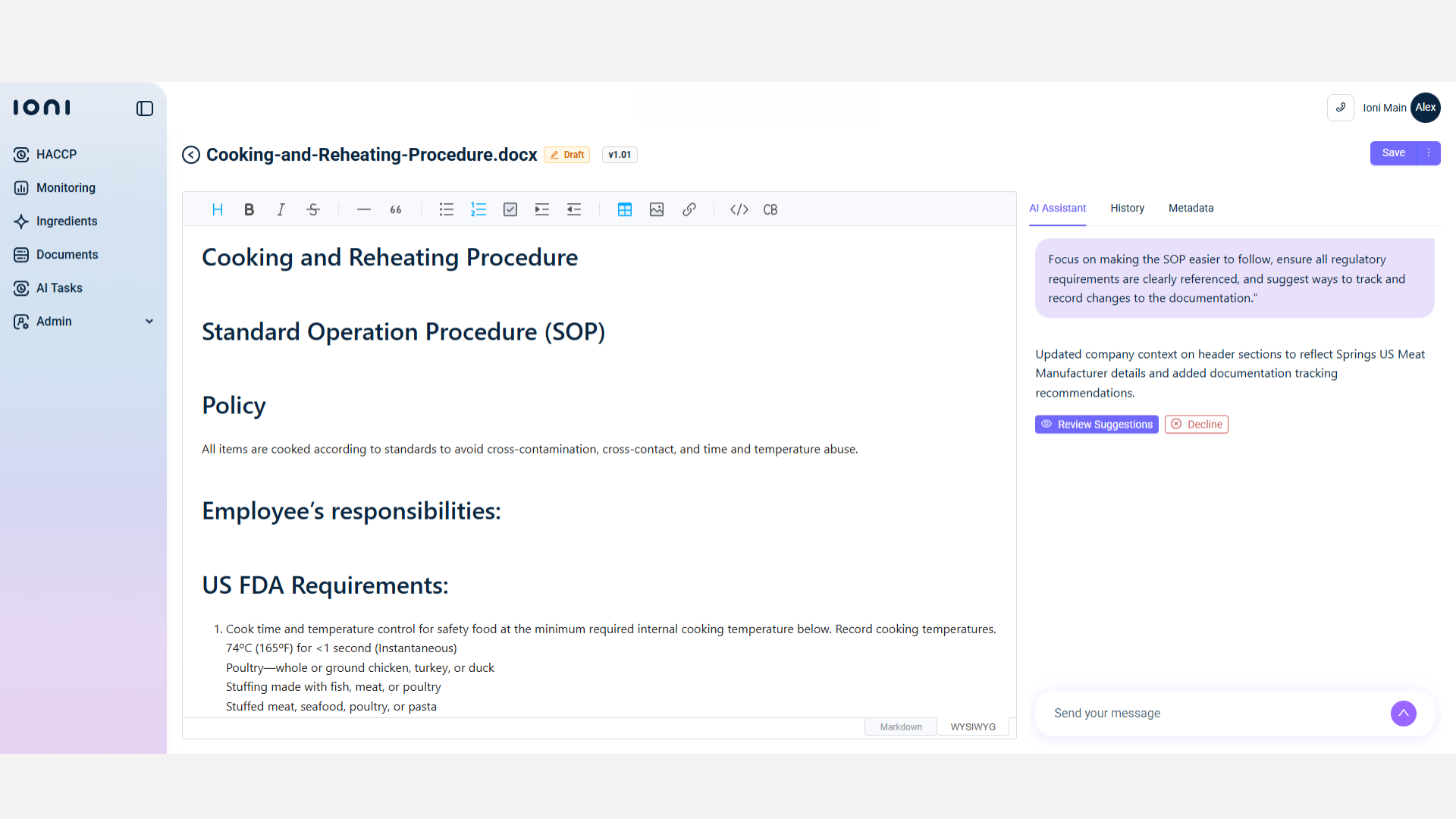
Step 5. Task Management
IONI automatically generates tasks based on corrective and preventive actions:
- Tasks are assigned to responsible team members
- Each task includes deadlines, descriptions, and priority levels
- Task progress is monitored in real time

Tasks can also include preventive maintenance, process checks, or hazard monitoring, ensuring that food recalls and preventive actions are executed promptly and efficiently.
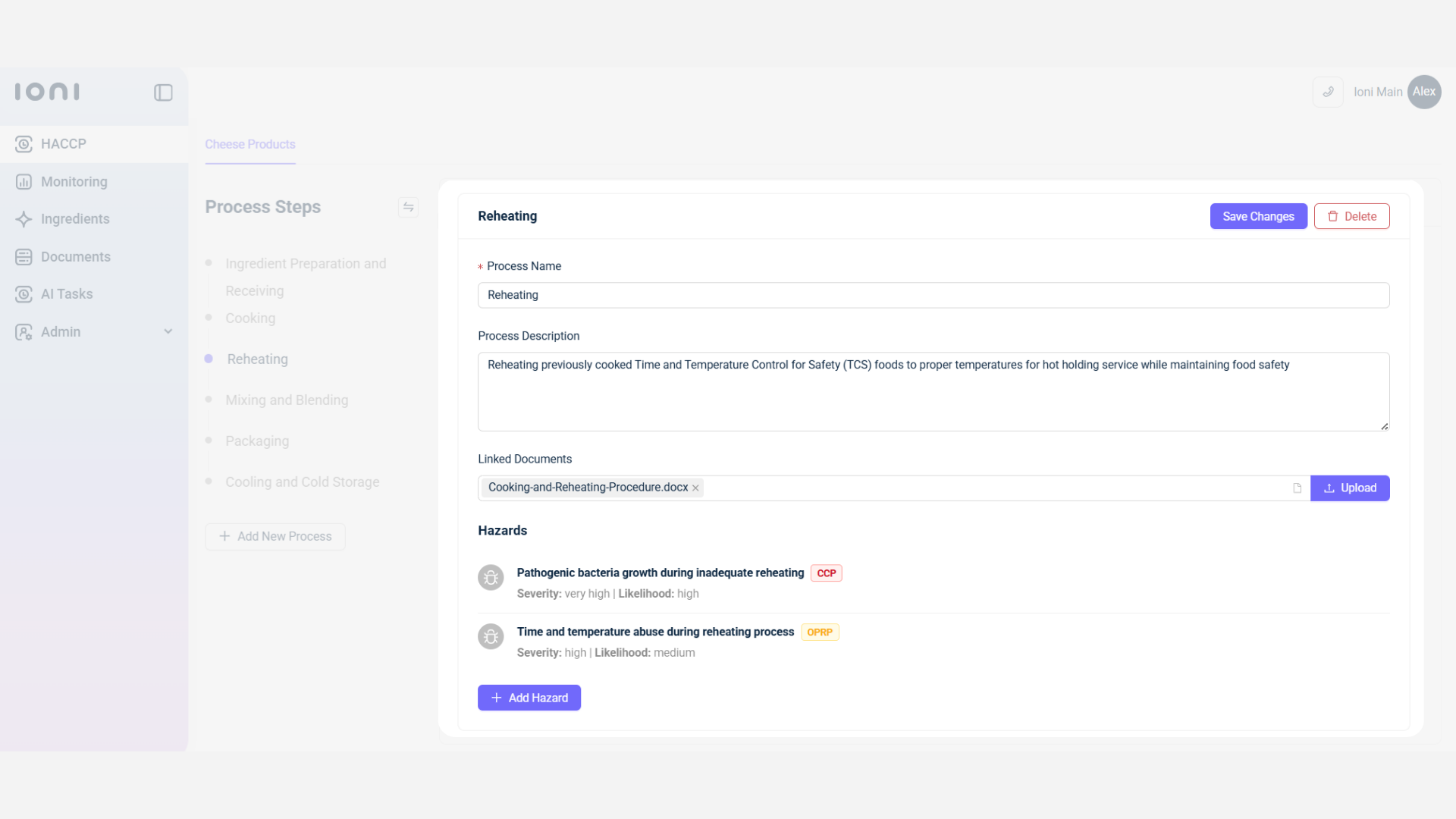
Step 6. Compliance Dashboard
The centralized dashboard gives a comprehensive view of food recall management and overall food safety compliance:
- Active deviations and nonconformances
- Open and closed CAPAs
- Task status and on-time completion tracking
- SOP version control
- Staff training and certification completion
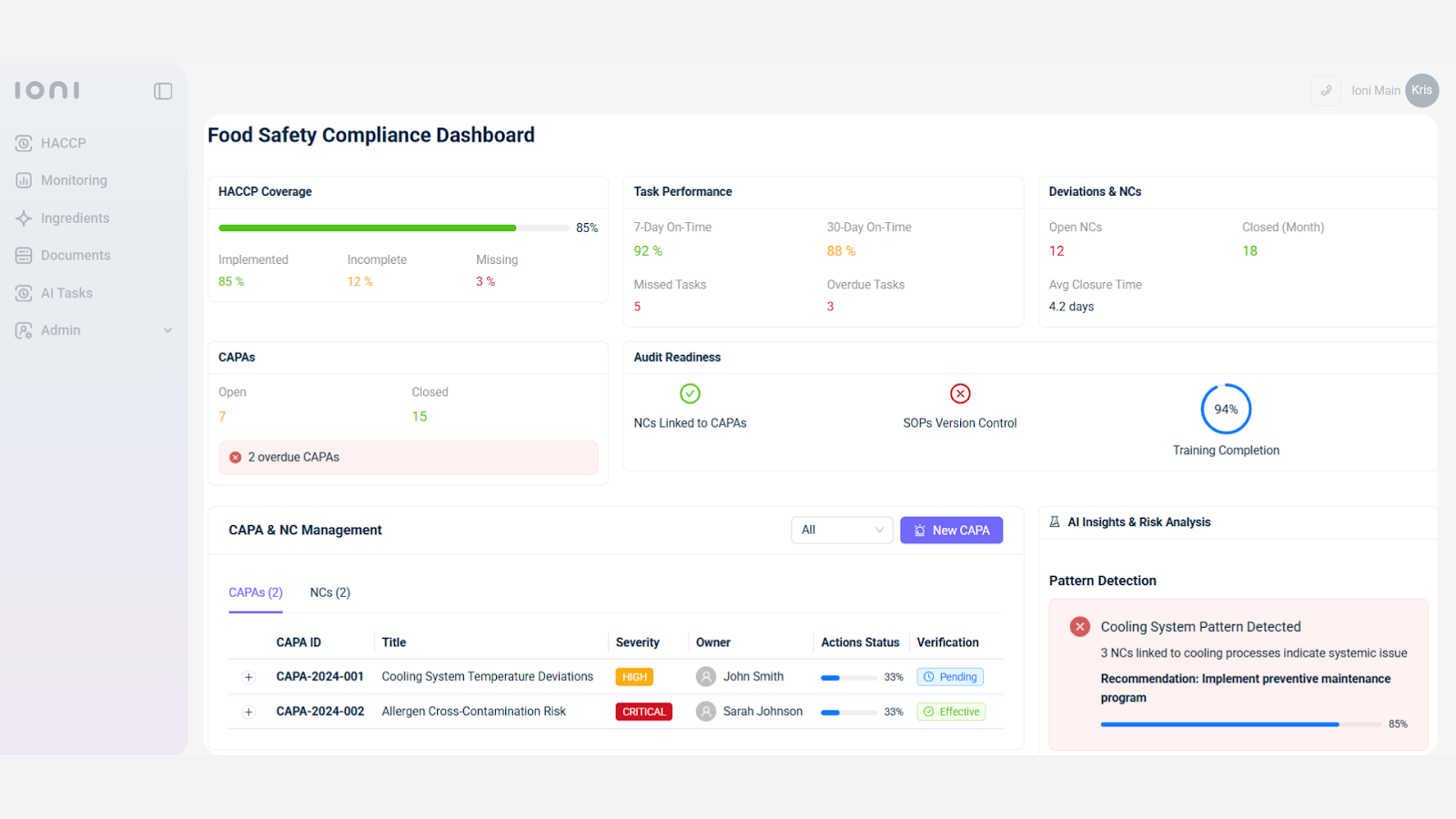
The dashboard enables managers to monitor progress, detect bottlenecks, and ensure regulatory readiness, while also generating detailed reports for regulatory authorities and internal review.
Step 7. AI Insights and Risk Analysis
IONI provides advanced AI-driven insights to help businesses anticipate and prevent potential recalls:
- Detects recurring patterns of deviations, highlighting systemic risks
- Provides predictive alerts for potential equipment or process issues
- Identifies regulatory gaps, such as missing training or SOP updates
- Highlights high-risk areas for immediate corrective action
- Facilitates collaboration across teams and external agencies, including cross-border recall coordination
The combination of historical data, real-time monitoring, and predictive analytics empowers businesses to manage food recalls proactively rather than reactively.
This integrated workflow shows how IONI food recall management software centralizes every aspect of recall operations - from detection and AI-driven action recommendations to SOP updates, task tracking, and compliance dashboards - allowing businesses to manage food recalls efficiently, maintain regulatory compliance, and protect consumers.
Discover how IONI can streamline your food recall management and provide a single platform to detect deviations, execute corrective and preventive actions, and maintain full traceability across your operations.
Schedule a demo today and see how your team can manage food recalls faster, smarter, and more reliably.
Conclusion
Effective food recall management is no longer optional; it is a critical element of ensuring consumer safety, protecting brand reputation, and maintaining regulatory compliance. Modern food recall management software like IONI allows organizations to manage food recalls proactively, linking real-time monitoring, AI-driven insights, CAPA management, and compliance tracking in a single platform.
By centralizing processes, automating notifications, and providing predictive risk analysis, businesses gain full visibility into every stage of the recall process. Choosing the right software transforms how recalls are executed, reducing response times and ensuring corrective and preventive actions are completed efficiently.
Investing in robust digital tools empowers food businesses to manage food recalls with precision, safeguard consumers, and strengthen overall food safety systems.


